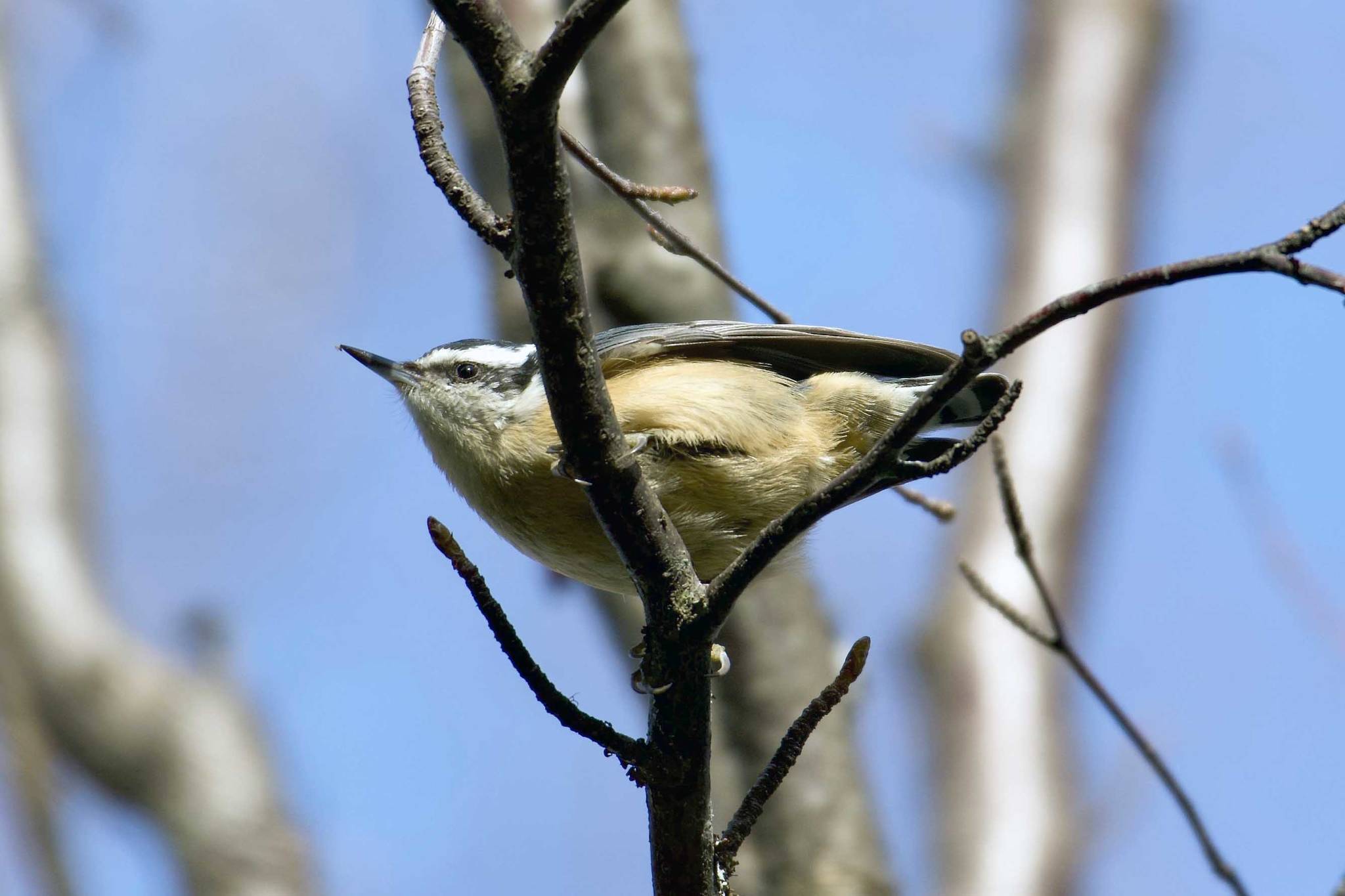I am always pleasantly surprised by the influx of daylight hours and sunshine that comes to the Kenai Peninsula in the last weeks of March. It feels like spring and, for me, that feeling is reinforced by hearing birds singing.
In Alaska, we have resident birds that overwinter and migrants that leave us here in the dark and cold. I heard my first resident bird songs in mid-March. Migrant birds won’t even show up until after the residents are nesting.
For example, gray-cheeked thrushes winter in South America and arrive back on the Kenai around the end of May. Two common resident birds that you can hear singing in early spring are the black-capped chickadee and the red-breasted nuthatch. Both are common at feeders.
The black-capped chickadee song is a pure two- or three-note whistle that sounds like “fee-bee” or “hey sweetie.” It is mostly sung by males, though occasionally by females.
The fee-bee song is used to advertise that a territory is taken. Black-capped chickadees are small birds with buffy, soft-feathered bellies and gray backs and wings.
They have a black cap, black chin and small black beak contrasting with their white cheeks. Chickadees are easy to observe in the winter because they bounce from limb to limb in active flocks making the distinctive chick-a-dee-dee call for which they are named.
The fee-bee song indicates the break-up of winter flocks as bird pairs split off to nest. Interestingly, black-capped chickadee pairs stay together for years.
Breeding pairs stay together all winter in the same flock and protect each other. There are cases of “divorce,” but in two decadelong studies in different places about 80% of the pairs stayed together.
On the Kenai Peninsula, black-capped chickadees can be confused with boreal chickadees. They look similar except that boreal chickadees have a brown cap.
Our local chickadees have similar calls, but boreal chickadees do not sing. Therefore, if you hear the clear whistle song of a chickadee, it is a black-capped.
The red-breasted nuthatches are less melodic than the black-capped chickadees. Most of their songs are best described as nasally and repetitive. Red-breasted nuthatches are territorial in the summer.
Pairs that overwinter will stay and maintain their territory all year. In the spring, males have a song that consists of a harsh series of rapidly repeating “hn-hn-hn-hn-hn.”
This is often used when aggressively defending the territory from intruding nuthatches. The courtship song, which is attractive to females, can be a slow or fast series of repeating “waa-aa-ns.” Red-breasted nuthatches also can loudly call series of “yank-yank-yank” to delight our ears.
If you can track down the source of these penetrating sounds, you will see a small, compact bird with a short tail and squat neck. Red-breasted nuthatches have gray backs and wings in contrast to their rusty bellies. They have a sharp black bill and thick black eye line under a white eyebrow.
I love birding because birds offer daily entertainment that matches the rhythm of the season.
Dr. Dawn Magness is the landscape ecologist at Kenai National Wildlife Refuge. Find more Refuge Notebook articles (1999-present) at https://www.fws.gov/Refuge/

